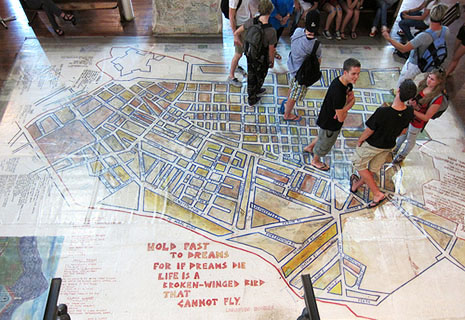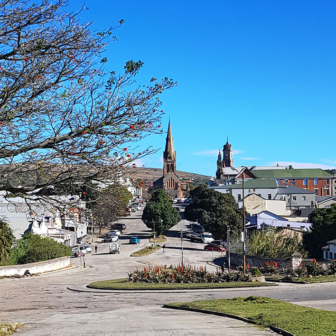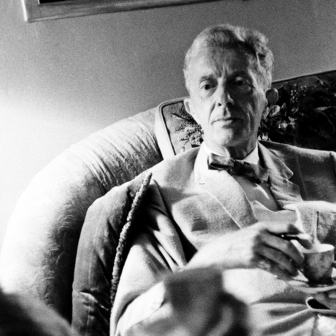BONITA BENNETT was just a toddler when her family moved from Cape Town’s vibrant inner suburb of District Six, which was about to be declared a whites-only area, to Bonteheuwel township on the bleak Cape Flats. It was 1964, a good two years before the forcible removal of more than 60,000 mostly coloured people from the suburb began under South Africa’s Group Areas Act.
Bennett’s mother resisted treating Bonteheuwel as home. “She kept saying, no, we’re not doing the garden because we’re not really staying here,” says Bennett. “It was about not putting down roots because putting down roots was an acceptance, I think, in her mind.” So frequently did Bennett visit relatives in District Six – people who were among the last to remain in the city’s historic district at the foothills of Table Mountain – that she regarded it as home. “I have such a vivid childhood memory of playing in the street or following the dance bands that I actually imagined that I had still lived there,” says Bennett.
“On the Fridays we would come home from school, my mother would be waiting for us. The bags would be packed and we would get on the bus straight from school and we would come to my aunt’s place in District Six and we would stay there until Monday morning. We would have our homework and everything. This was where we socialised. This was where our home was. You’d get back on the bus on a Monday morning and go straight from the District Six bus back to school...”
Bennett’s father worked in a shoe factory and played bass guitar and double bass in dance bands and choirs – including one group known as the Bloemhof Crusaders, which is celebrating its seventieth anniversary this year. “The house where my mother spent her early days before she was married is still there,” she says. “When I was looking back as a seventeen-year-old or eighteen-year-old and am talking to my mother and telling her, you know the time we lived in District Six? And she says, think about it, you weren’t actually living there.”
These days Bennett, who visited Melbourne recently to deliver a keynote speech to the Owning Racism: Can We Talk? symposium at Melbourne’s Immigration Museum, is director of the District Six Museum. Opened in late 1994, the year of her country’s first democratic elections, the museum was established – in the words of its mission statement – as “a vehicle for advocating social justice, as a space for reflection and contemplation and as an institution for challenging the distortions and half-truths which propped up the history of Cape Town and South Africa.”
“I think it is also about building critical and engaged citizenship,” adds Bennett. She sees an ongoing need to deal with the legacies of poverty, uneven distribution of resources, and educational, housing and other disadvantages.
I interviewed Bennett by phone on the eve of her first Australian visit. We then met up at the symposium, where I joined a panel discussion to reflect on my brief experience as a journalist in South Africa, before I settled in Australia in the early 1980s, and its impact on my work for newspapers including the Sydney Morning Herald, the Age and the Sunday Age. I knew apartheid from the other – privileged – side. I had grown up just a few kilometres from another community commemorated by the museum, Protea Village, near Kirstenbosch. My hometown was on the other side of the mountain that the indigenous Khoi people once called Hoerikwaggo, or Mountain of the Sea.
Sometime during my school years, the segregation of double-decker buses came into force, with the lower level open to whites only. Things had been different during my early years at school. As I wrote in a memoir, The Wild Almond Line, “When the E6 bus arrived at our stop in the days when the fare was just a cent… we went upstairs. At the back of the bus sat the coloured kids. We were permitted to sit alongside each other, uneasily. I have this vague memory of sitting beside a dark girl with a mesh of uncharacteristically whitish hair. We sat stiffly alongside each other, relieved when our stop approached and it was time to go. Racism is ignorance. We came to believe that they were different; we were meant to remain apart. Then, one day, they were gone. I don’t remember noting the absence.”
“Strangely,” says Bennett, “my memories of District Six as a child are not about trauma and destruction. It is, I think, age-related and I think as a parent trying to shield the kids from what they are going through because I was quite young.”
BENNETT went on to live in another township, Mitchell’s Plain. She studied at the University of Cape Town and became a teacher at Ocean View, a community forced out of an area near the naval base at Simonstown after it was declared whites-only. More recently, she returned to university to do a masters degree in the narratives of forced removals. “My field was really applied linguistics. I was very interested in sociolinguistics, looking at the relationship between spoken language and thought language and social conditions. Narratives and storytelling were always something that I was very, very interested in. That grew out of my community experience... I became very keen on understanding how people make sense of their lives, how you story your life; how you use stories...”
She describes the museum as a place “of memory, a place where people can deposit the stories.” The museum is also a place where people whose homes had been destroyed can verify that they lived in the district. “You couldn’t recognise the streets,” says Bennett. “New streets were built. The street grid was gone. There was no evidence for people that they had lived on the land, particularly because they did not have the title deeds to the land. For a lot of people, all they had were the memories and stories. They felt that they needed something to cohere and that is how the museum comes about... Eventually it also becomes a place where people can share documentation to support their land claims.”
At first the museum was housed in church halls and community centres. Since its formal opening in 1994, it has been located in a Methodist church on the edge of the city and is in part a performance space for music and storytelling. “Through that, we find people found their healing. It’s like an affirmation of self, I suppose. You were written out of the history books. There was no reference to your life except like a little one-liner and... and suddenly you’re finding space for your voice.”
Former residents could claim the right to return under the Land Restitution Act of 1995 even if most had been tenants. “The act has got to look back historically at all of these things and see how it can make it possible. So it has been a long and painful process of lodging claims of verification and validation of ensuring that the right people are returning. Some people are offered financial compensation instead of returning.”
While I was a student I worked part-time at a bookshop with a man whose family had lived in the area. He told me about a curse on the land at District Six. In the post-apartheid era, though, Bennett talks of a blessing rather than a curse. “There is a great sense for those who have returned that it is a blessing. It is a blessing to be back at the foot of Table Mountain. And you know what Capetonians like about Table Mountain. It’s like the centre of the universe.”
Bennett has been director for almost half of the decade she has worked at the District Six Museum. She came back to the area in the early 2000s with her husband, Michael Weeder, a priest at St Philip’s Anglican Church in District Six who became dean of St Georges Cathedral in Cape Town. Their two daughters, aged twenty-one and twenty-five, and their twenty-two-year-old son have experienced some difficulty in coming to terms with the notion of forced removals and have been slow to appreciate the significance of District Six.
“Sometimes children almost want to resist things that are important to you,” Bennett says. “We’ve gone through a bit of that. They couldn’t understand why we are fussing about this crummy piece of land.” She laughs.
“Part of it, as I say, is... resistance to the parental thing. But I think that while there now is great understanding, great respect, they don’t quite understand how we could have allowed this to happen. They are growing up with a different sense of agency, a different sense of what is possible. They don’t understand segregation – how people could legislate for you not to get on a bus or not to go to a beach. It almost feels that we lived in a Harry Potter movie or something.” •




